Abstract
This article summarizes the present state of knowledge about the organization of the water oxidizing polypeptide complex of photosynthesis and the mechanism of its operation. Spectacular advances have been made in recent years, but many questions remain to be answered. Among them are those concerned with the organization and binding of the functional Mn, its specific role in the oxidant storage that precedes the formation of one oxygen from two water molecules, and its cooperation with other redox-active constituents. Much is still to be learned also about the function of the individual polypeptides and about the role of the cofactors Ca2+ and Cl−. Differences between the organization of the water oxidizing complexes in green plants and cyanobacteria suggest, furthermore, that in vivo their water oxidizing mechanisms must operate under different, still unrecognized constraints.
Full text
PDF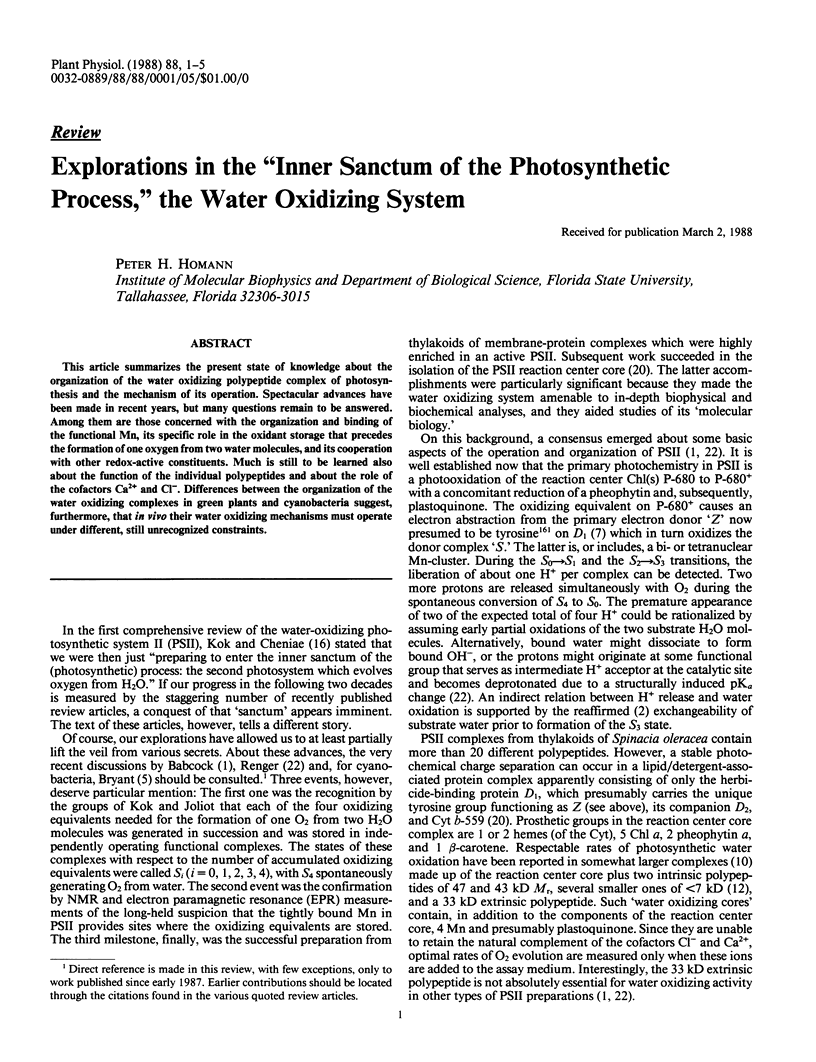
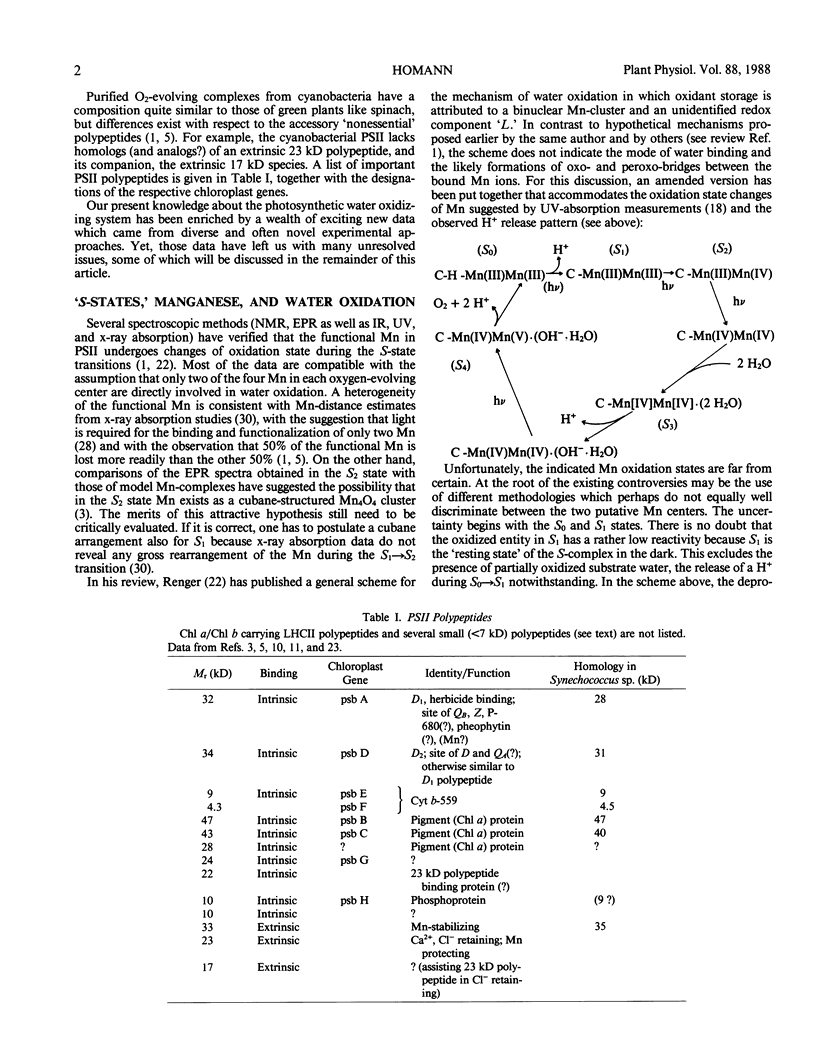
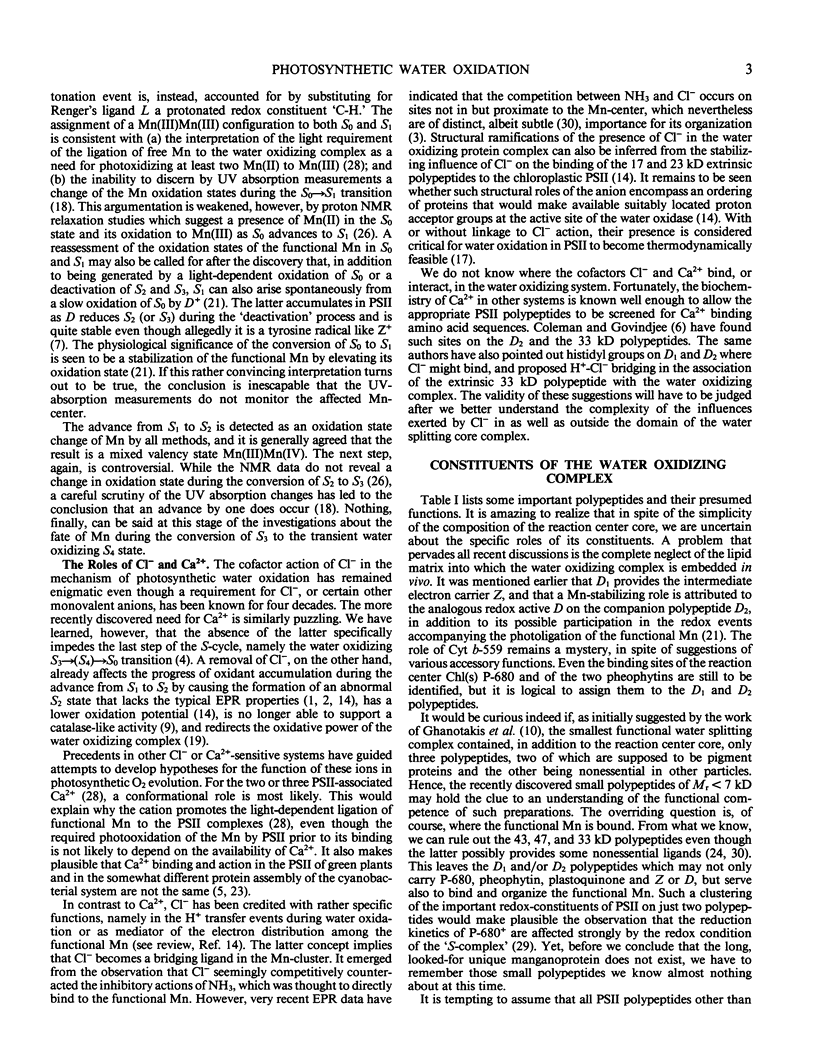
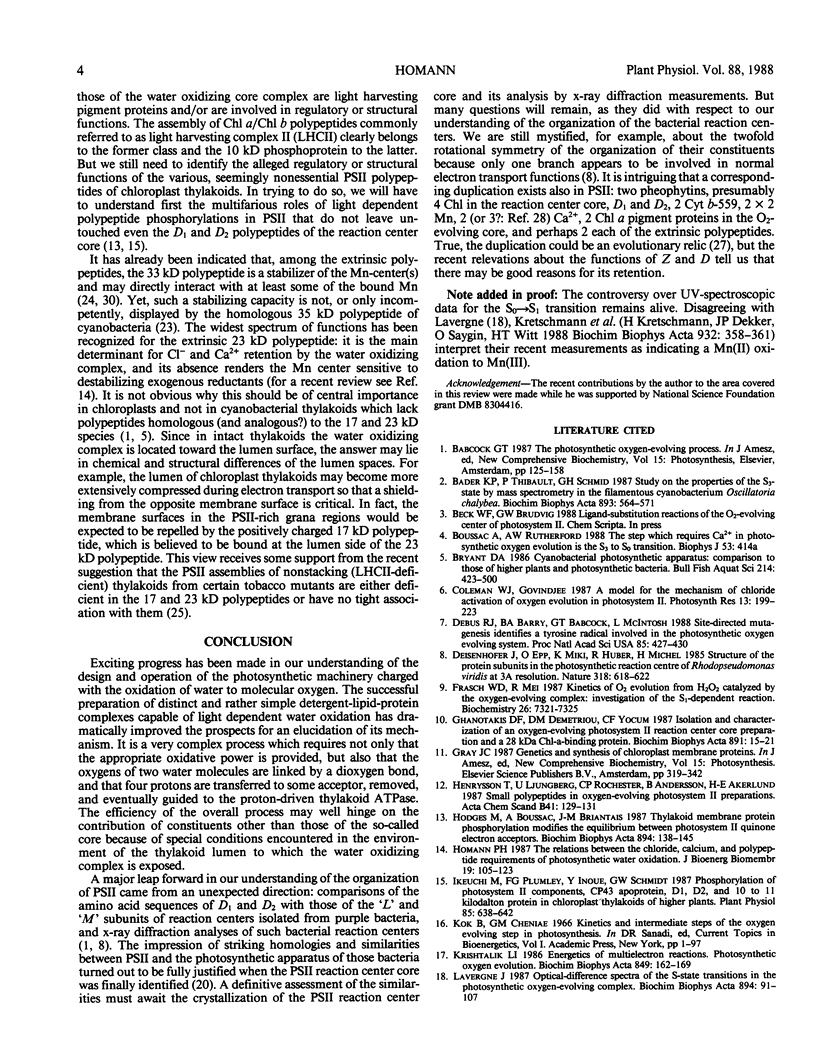
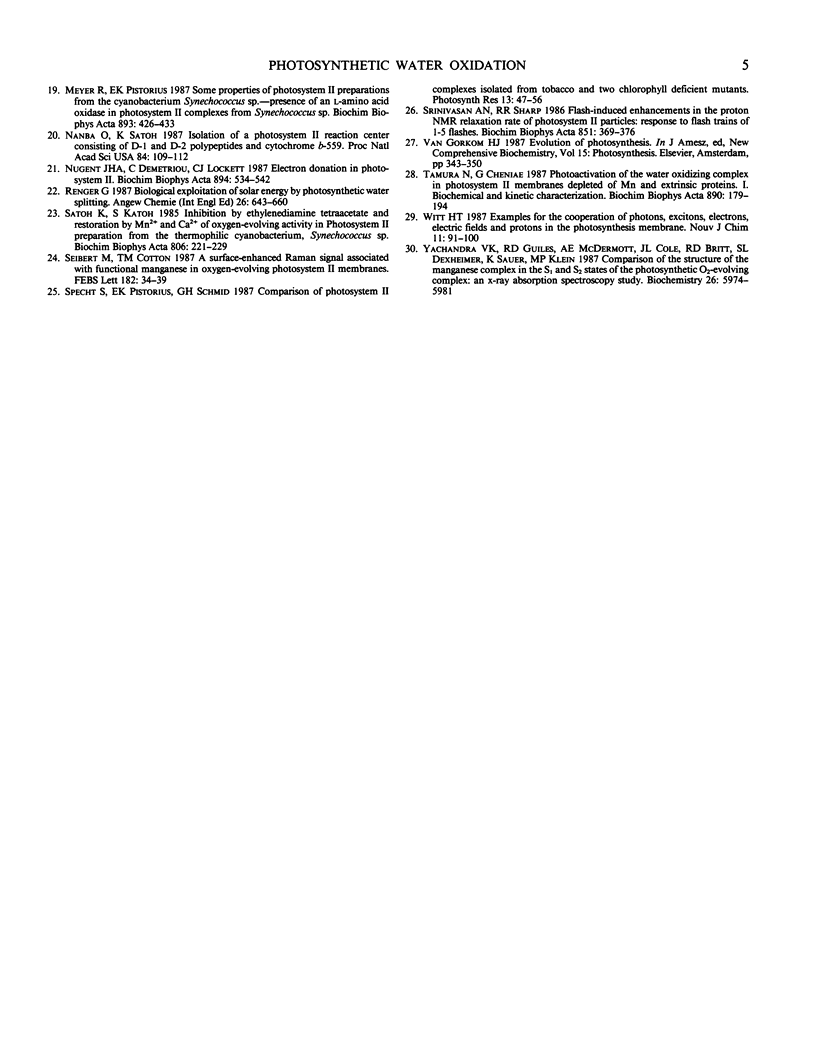
Selected References
These references are in PubMed. This may not be the complete list of references from this article.
- Debus R. J., Barry B. A., Babcock G. T., McIntosh L. Site-directed mutagenesis identifies a tyrosine radical involved in the photosynthetic oxygen-evolving system. Proc Natl Acad Sci U S A. 1988 Jan;85(2):427–430. doi: 10.1073/pnas.85.2.427. [DOI] [PMC free article] [PubMed] [Google Scholar]
- Frasch W. D., Mei R. Kinetics of O2 evolution from H2O2 catalyzed by the oxygen-evolving complex: investigation of the S1-dependent reaction. Biochemistry. 1987 Nov 17;26(23):7321–7325. doi: 10.1021/bi00397a019. [DOI] [PubMed] [Google Scholar]
- Homann P. H. The relations between the chloride, calcium, and polypeptide requirements of photosynthetic water oxidation. J Bioenerg Biomembr. 1987 Apr;19(2):105–123. doi: 10.1007/BF00762720. [DOI] [PubMed] [Google Scholar]
- Ikeuchi M., Plumley F. G., Inoue Y., Schmidt G. W. Phosphorylation of Photosystem II Components, CP43 Apoprotein, D1, D2, and 10 to 11 Kilodalton Protein in Chloroplast Thylakoids of Higher Plants. Plant Physiol. 1987 Nov;85(3):638–642. doi: 10.1104/pp.85.3.638. [DOI] [PMC free article] [PubMed] [Google Scholar]
- Nanba O., Satoh K. Isolation of a photosystem II reaction center consisting of D-1 and D-2 polypeptides and cytochrome b-559. Proc Natl Acad Sci U S A. 1987 Jan;84(1):109–112. doi: 10.1073/pnas.84.1.109. [DOI] [PMC free article] [PubMed] [Google Scholar]
- Yachandra V. K., Guiles R. D., McDermott A. E., Cole J. L., Britt R. D., Dexheimer S. L., Sauer K., Klein M. P. Comparison of the structure of the manganese complex in the S1 and S2 states of the photosynthetic O2-evolving complex: an x-ray absorption spectroscopy study. Biochemistry. 1987 Sep 22;26(19):5974–5981. doi: 10.1021/bi00393a005. [DOI] [PubMed] [Google Scholar]


